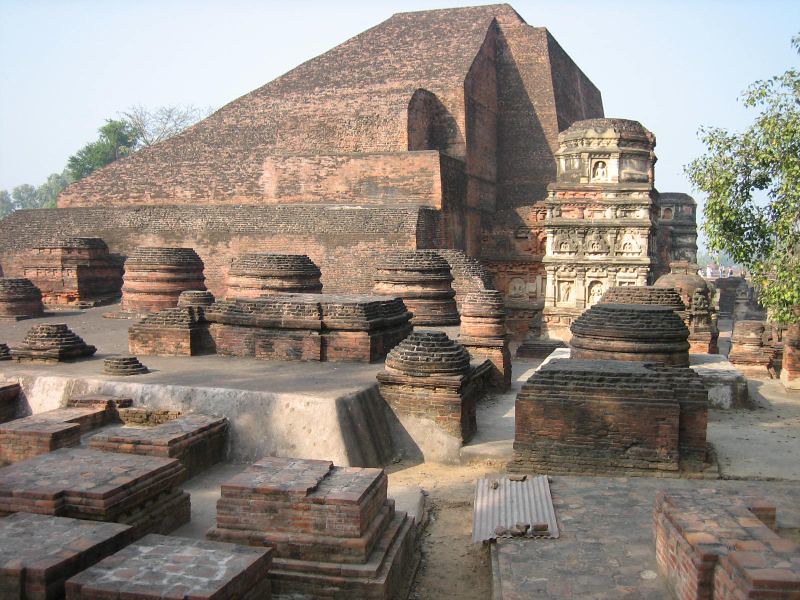
BPSC General Science Question Bank – Physics
BPSC General Science – Physics Question Bank of BPSC Previous Year’s papers for preparation of BPSC Prelims and other Bihar state examinations.
Home » BPSC Study Materials » BPSC Question Bank » BPSC Indian Geography Question Bank
BPSC Indian Geography Question Bank of BPSC Previous Year’s Papers for preparation of BPSC Prelims and other Bihar state examinations.
1. Area of India is 2.4% of the total area of the world but its (BPSC – 1994)
(a) Population is 16% of world population
(b) Population is 17% of world population
(c) Population is 18% of world population
(d) Population is 28% of world population
Correct Answer – (b) Population is 17% of world population
2. The expansion of India is between ? (BPSC – 1994)
(a) 37° 17′ North and 8º 06′ South
(b) 37° 17′ North and 8° 04′ South
(c) 37° 06’ North and 8º 04′ South
(d) None of the above
Correct Answer – Ans. (d).
3. How much is the difference between Indian Standard Time (I.S.T.) and Greenwich Mean Time (G.M.T.) ? (BPSC – 2001)
(a) 4 hours 30 Minutes
(b) 5 hours 30 Minutes
(c) 3 hours 30 Minutes
(d) 4 hours 00 Minutes
Correct Answer – (b) 5 hours 30 Minutes
4. The foothills region of Himalayas is called ? (BPSC – 1999).
(a) Trans-Himalayas
(b) Shiwalik
(c) Greater Himalayas
(d) Aravali
Correct Answer – (b) Shiwalik
5. Shiwaliks were formed in ? (BPSC – 1997)
(a) Eozoic
(c) Mesozoic
(b) Paleozoic
(d) Cenozoic
Correct Answer – (d) Cenozoic
6. Which of the following hills are found where the Eastern Ghats and the Western Ghats meet ? (BPSC – 1999, 2016)
(a) Annamalai Hills
(b) Cardamom Hills
(c) Nilgiri Hills
(d) Shevaroy Hills
Correct Answer – (c) Nilgiri Hills
7. Western Ghats in Maharashtra and Karnataka is known as ? (BPSC – 2000)
(a) Nilgiri mountain
(b) Sahyadri
(c) Deccan plateau
(d) None of these
Correct Answer – (b) Sahyadri
8. Highest mountain peak located in India is ? (BPSC – 1997)
(a) Anamudi
(b) Kanchanjungha
(c) Nanda Devi
(d) Mount Everest
Correct Answer – (b) Kanchanjungha
9. Chotanagpur Plateau ? (BPSC – 1995)
(a) Is rich in minerals and coal
(b) Is a pitfall
(c) Is a foothill
(d) Is a fold mountain
Correct Answer – (a) Is a front sloping
10. Lakshadeep island is situated ? (BPSC – 1992)
(a) In South West India
(b) In South India
(c) In South East India
(d) In East India near West Bengal
Correct Answer – (a) In South West India
11. Islands group Lakshadweep was formed by the ? (BPSC – 1994)
(a) Accumulation of coral reef
(b) Accumulation of volcano substances
(c) Soil sedimentation
(d) None of the above-mentioned is true
Correct Answer – (a) Accumulation of coral reef
12. Vidarbha is a regional name in India and it is a part of ? (BPSC – 1996)
(a) Gujrat
(b) Maharashtra
(c) Madhya Pradesh
(d) Orissa
Correct Answer – (b) Maharashtra
13. The Pat region is located in ? (BPSC – 2000)
(a) Bihar
(b) Jharkhand
(c) Madhya Pradesh
(d) Meghalaya
Correct Answer – (b) Jharkhand
14. The three largest States of India in order of area are ? (BPSC – 2011)
(a) Rajasthan, Madhya Pradesh, Maharashtra
(b) Madhya Pradesh, Rajasthan, Maharashtra
(c) Maharashtra, Rajasthan, Madhya Pradesh
(d) Madhya Pradesh, Maharashtra, Rajasthan
Correct Answer – (a) Rajasthan, Madhya Pradesh, Maharashtra
15. Manas is the tributary of which among the following rivers ? (BPSC – 2000)
(a) Godavari
(c) Krishna
(b) Mahanadi
(d) Brahamputra
Correct Answer – (d) Brahamputra
16. In India, the third largest state according to population is ? (BPSC – 2008)
(a) Maharashtra
(b) Madhya Pradesh
(c) Karnataka
(d) Bihar
Correct Answer – (d) Bihar
17. Consider the following statements : (BPSC – 2001)
1. Capital of Gujrat is Gandhinagar.
2. Capital of Rajasthan is Jaipur.
Select the correct answer using the codes given below:
(a) 1 only
(b) 2 only
(c) Both 1 & 2
(d) None of the above
Correct Answer – (c) Both 1 & 2
18. The Dravidian races are mainly confirmed at which of the following parts of India ? (BPSC – 2016)
(a) South India
(b) North-Western India
(c) North-Eastern India
(d) North India
(e) None of the above/More than one of the above
Correct Answer – (a) South India
19. Which amongst the following states has no identified tribal communities ? (BPSC – 2015)
(a) Maharashtra
(b) Chhattisgarh
(c) Haryana
(d) Karnataka
Correct Answer – (c) Haryana
20. Gaddis are inhabitants of ? (BPSC – 2000)
(a) Madhya Pradesh
(b) Himachal Pradesh
(c) Arunachal Pradesh
(d) Meghalaya
Correct Answer – (b) Himachal Pradesh
21. Bodos are inhabitants of ? (BPSC – 1994)
(a) Garo hills
(b) Santhal Pargana
(c) Amazon Basin
(d) Madhya Pradesh
Correct Answer – (a) Garo hills
22. Where is the Bhil Tribe found ? (BPSC – 2008).
(a) Assam
(b) Jharkhand
(c) West Bengal
(d) Maharashtra
Correct Answer – (d) Maharashtra
23. In India, ‘Yarlung Zangbo River’ is known as ? (BPSC – 2015)
(a) Ganga
(b) Indus
(c) Brahmaputra
(d) Mahanadi
Correct Answer – (c) Brahmaputra
24. Mansarovar lake in Tibet is the source of which among the following rivers ?
(a) Brahmaputra
(c) Indus
(b) Satluj
(d) All the above
Correct Answer – (d) All the above
25. At which of the following towns the Alaknanda and the Bhagirathi combine to form Ríver Ganga ? (BPSC -2016)
(a) Haridwar
(b) Rishikesh
(c) Rudraprayag
(d) Devprayag
(e) None of the above/More than one of the above
Correct Answer – (d) Devprayag
26. The longest flowing river in India is ? (BPSC – 1995)
(a) Mahanadi
(b) Godawari
(c) Ganga
(d) Narmada
Correct Answer – (c) Ganga
27. The river which flows through a fault is ? (BPSC – 2000)
(a) Narmada
(b) Brahmaputra
(c) Ganga
(d) Krishna
Correct Answer – (a) Narmada
More questions are coming soon. Join us on Whatsapp for latest updates: Join CivilsCracker on Whatsapp

BPSC General Science – Physics Question Bank of BPSC Previous Year’s papers for preparation of BPSC Prelims and other Bihar state examinations.

BPSC Modern history Question Bank of BPSC Previous Year’s papers for preparation of BPSC Prelims and other Bihar state examinations.

BPSC Medieval history Question Bank for preparation of BPSC Prelims and other Bihar state examinations.

BPSC Ancient history Question Bank for preparation of BPSC Prelims and other Bihar state examinations.
We are adding new Notes, Chapterwise MCQs, Quizzes, Previous Years Questions everyday
We are adding new Notes, Chapterwise MCQs, Quizzes, Previous Years Questions everyday